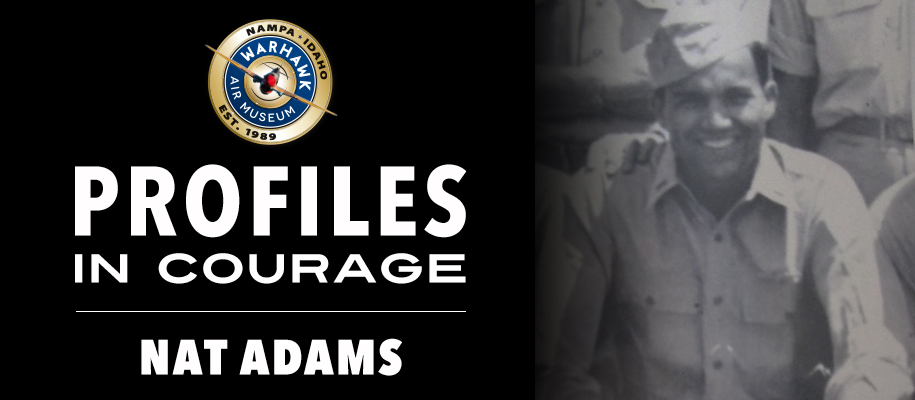
Posted On: July 2, 2020
Saving Two U. S. Presidents
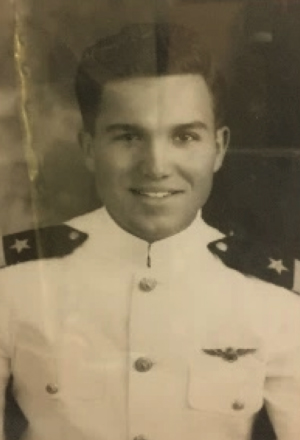
From the cockpit of his F6F Hellcat, 21-year-old Nat Adams saw a Japanese destroyer alone and traveling fast. He and five other pilots were flying from the U.S.S. San Jacinto on a mission near the Island of Chichijima (south of Japan) in September 1944.
It was soon after Nat spotted the Japanese destroyer that he saw one of the other planes in the squadron was hit and smoking badly. He remembers, “I kept saying to myself, get out, get out! I saw one crewman get out, but his chute didn’t open, then we saw another parachute. Moments later, the plane exploded.”
Nat noticed that 20 Japanese boats were coming for the downed pilot, so the remaining three planes knew what they had to do.
Approximately 1,460 machine-gun bullets were fired at the would-be captors from each of the remaining Hellcats as the planes with their crews watched over the survivor in the water until the U.S.S. Finback (submarine) arrived to rescue the 19-year-old- pilot.
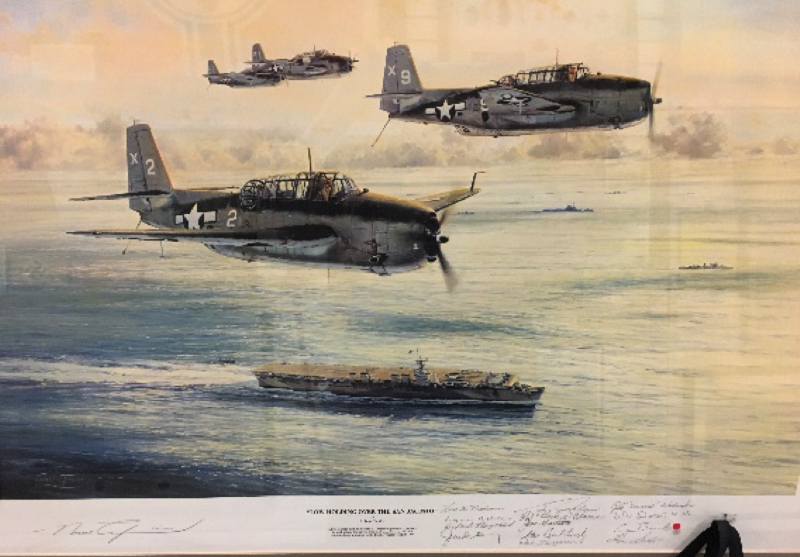
Who was the Downed Pilot?
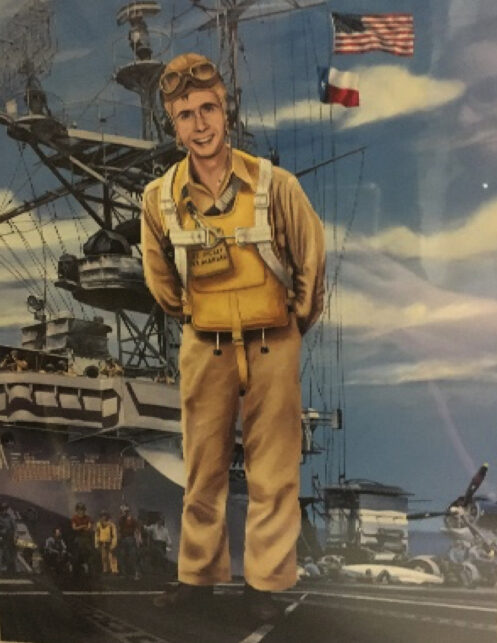
Later, the world would realize that Nat had helped to save two future Presidents of the United States. The name of the downed pilot was Lt. (j.g.) George Herbert Walker Bush, who became the 41st President of the United States on January 20th, 1989. George H. W. Bush was the father of George Walker Bush, the 43rd President of the United States. Nat modestly recalled the event saying, “There were four of us out there. We were doing what we needed to do.”
So, what is the story of Nat Adams?
The making of a Naval Aviator
Nat Adams was born July 16, 1921 in Buhl, Idaho. He graduated from Boise High School and attended Boise Junior College (renamed Boise State University in 1969). Nat was one of two boys in a family of six children. As a young child, he made about 40 airplanes out of Balsa wood, which helped to fuel his desire to fly.
On September 4, 1927, Nat was 9 years old and Charles Lindbergh dropped by Boise, ID during his cross-country tour. Nat and his classmates were bused from school to watch, along with 40,000 other Idahoans. Listen to Nat recount the experience as part of his Veterans History Project Interview in the video below:
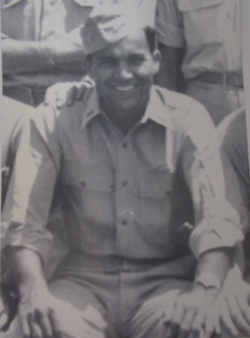
He enlisted in the United States Navy in 1942 and received his pre-flight and initial training in California. While in California, Nat and one other cadet were honored with the task of escorting Bob Hope on tour around the base before he went on stage.
Next, Nat was sent to Corpus Christi, Texas, for advanced operational training for fighter aircraft, which included practicing on a runway marked to be the size of the landing area on a carrier ship. The “big” test came when the pilots were transported from Texas to the Great Lakes in Michigan—in the middle of Winter! Nat recalled that the temperature was below 0, and he had to “stick” four landings in the fog.
A Prior Rescue

About three weeks before the rescue of George H.W. Bush, Nat himself had to be rescued from the ocean’s waters. He was part of a four-plane mission attacking a Japanese ship loaded with mines. As chance would have it, Nat’s plane was the last in line when the Japanese ship exploded throwing metal parts high in the sky. A piece of the flying metal hit Nat’s plane, damaging a wing as well as tearing away an aileron (a hinged surface in the trailing edge of an airplane wing used to control balance). Although he tried to make it back to the U.S.S. San Jacinto, it became apparent that the plane was going down. Lt. (j.g.) George Bush piloted one of the three remaining planes providing cover for Nat until he was in a position to be rescued. Neither one of the two pilots had any idea that their roles would be reversed in less than a month!
The destroyer U.S.S. Healy was nearby, and with great skill, Nat bellied his Hellcat into the water. Missing his one-man raft, Nat swam toward the Healy and was taken safely on board.
The Healy had on board the mail bags for the San Jacinto. When the two ships were able to arrange a transfer of Nat and the mail, things didn’t go to plan:
After the War

Nat earned his degree in architecture at the University of Oregon and then returned to Boise to apply his new career. He started Nat J. Adams and Associates as a member of A.I.A. (American Institute of Architects). Today, the work of his firm is found throughout the western states. In Boise, for example, Bronco Stadium and Physical Education Complex (Boise State University), Valley View Elementary School, First Security Bank (State Street Branch), All Saints Episcopal Church and numerous other buildings are all a part of his lasting legacy.
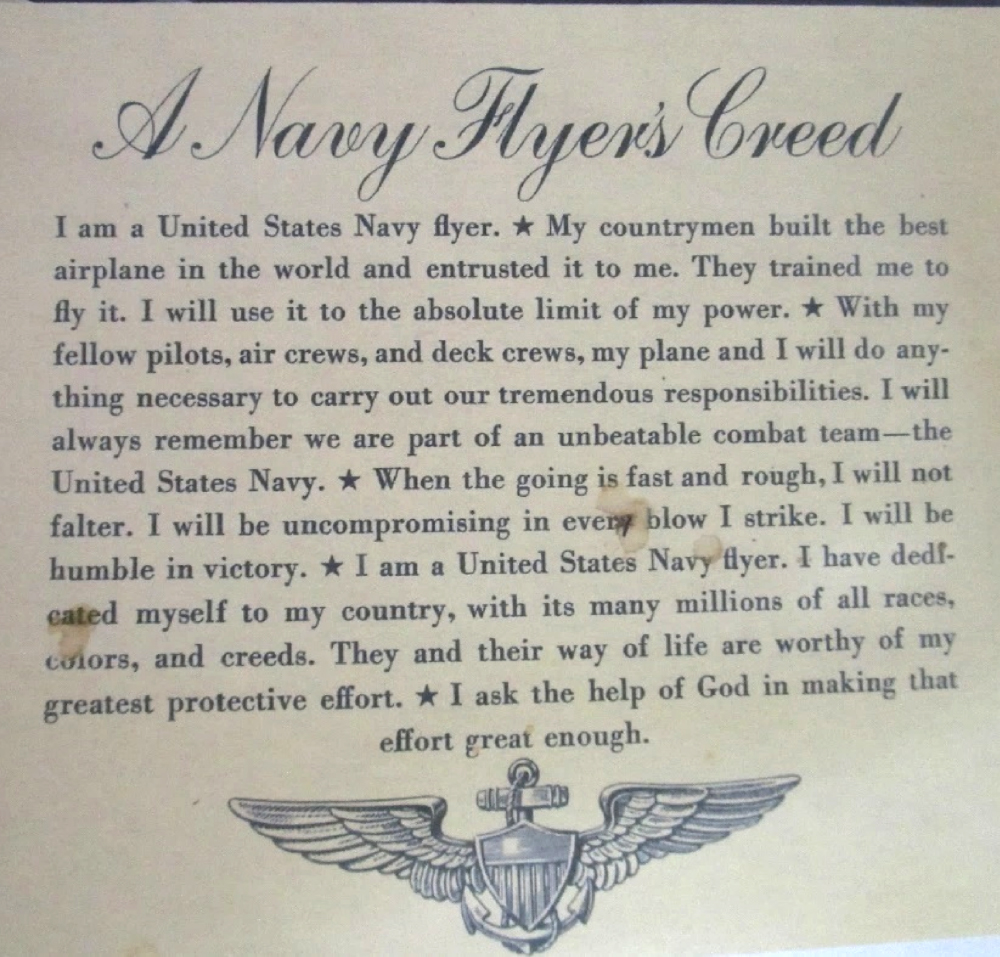
Nat Adams passed away August 21, 2007, but his remarkable story can be found at the Warhawk Air Museum as exhibit #94 and his entire Veteran’s History Project Interview is available to view online.
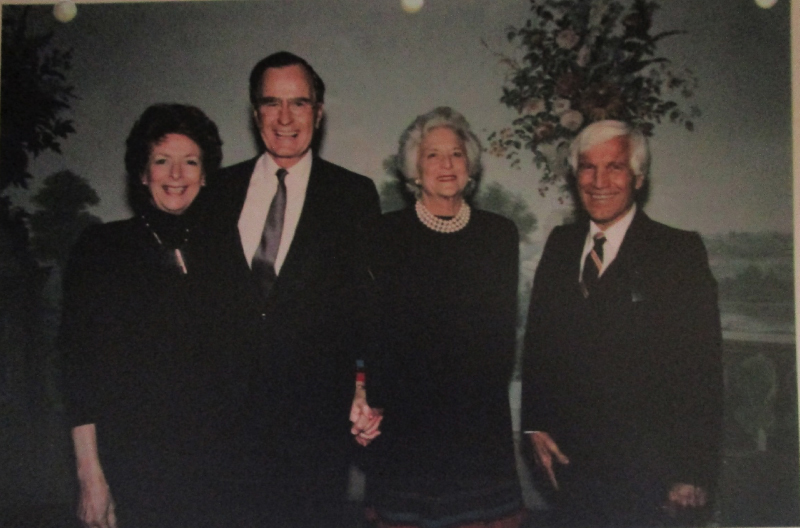
Sally Adams, George H.W. Bush, Barbara Bush and Nat Adams.




I had the good fortune to work for Nat. I was the project architect for the Boise State new football stadium and athletic complex.
Top this: Nat was my Mother’s first date (so she often told me)! They were in the same class at Boise High. A few years out of High School my Mom was a secretary at Gowen Field where she met a B17 bombardier who would become my Dad. Nat, his wife and my parents became good friends after the War. My Dad went from a bombardier to a P51 pilot – I loved hearing all the War stories!